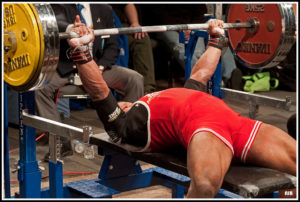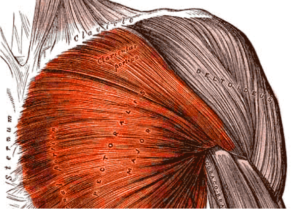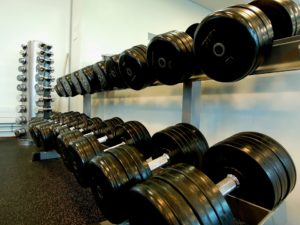Training programs for throwers often do not include barbell bench and overhead pressing. I’ve heard several coaches complain about this programing, saying that throwers are babied too much in the weight room, and that throwers are more resilient than we think. However, while throwers are resilient and many of them may have no problems stemming from the use of these movements, we, as strength coaches, are after performance optimization, and these movements do not offer that to our throwers.
Bench Press
The pectoralis major plays an important role in accelerating the arm. Therefore, movements that strengthen the pec are an important part of any training program.
However, there are pressing variations, other than barbell bench-pressing, that allow for safer movement while still strengthening the pec.
For example, dumbbell bench pressing variations and cambered Swiss bars allow for greater range of motion (ROM), especially horizontal abduction. Barbells restrict ROM, and over time this may lead to a loss of ROM, or at the very least an inability to create force out of more extreme horizontally abducted positions (as is required for high velocity throwing). Being strong through the end ranges of motion helps to not only make athletes more resilient to injury, but also optimizes performance.
Barbells force shoulders into more internally rotated positions due to the pronated grip, which can cause anterior glide of the humeral head, where the head of the humerus moves forward in the capsule, and shoulder injuries. Dumbbells and Swiss bars allow for friendlier shoulder positions since athletes are able to use a more neutral grip and keep their shoulders more externally rotated.
The goal of the weight room is to help improve on-field performance and injury prevention, so why would we use a movement that has a greater risk of hurting throwers without increased benefits? Dumbbells and cambered Swiss bars can still be loaded heavily while offering better positions for throwers’ shoulders.
Overhead Press
The same holds true for typical overhead pressing variations. Overhead positioning is already difficult due to the anterior core stability demands to keep a neutral spine while pressing overhead. Add to that the hands being locked into a pronated position and having to clear the chin on the way up, and you have a recipe for pain and injury.
Dumbbell and landmine pressing variations allow for neutral shoulder positioning due to the freedom of movement of these options. Since the arms are working independently on the implements, the grip can be modified to fit the shoulder positioning needs of throwers. These variations also offer similar loading capabilities and allow for safer execution and greater carry over to the field.
Barbell bench pressing and barbell overhead pressing are not inherently bad or wrong for everyone; they just aren’t optimal for overhead throwing athletes. The question should not be whether or not athletes CAN do something; it should be whether or not it’s optimal.
Resources:
Photo:
“Bench Press” by Andrew Blight CC BY 2.0
“Gray410_pectoralis_major.png” by Physiopedia CC BY-SA 3.0



